Rooftop gardens
Rooftop gardens have become increasingly popular in recent years. They are not only aesthetically pleasing, but they also offer a range of benefits such as reducing the urban heat island effect, providing insulation, and promoting biodiversity. In addition to these benefits, rooftop gardens provide a space for people to relax, socialize, and even grow their own food. In this article, we will explore the advantages of rooftop gardens, the considerations that need to be taken into account when designing one, and the materials and techniques that can be used to create a successful rooftop garden.
Advantages of Rooftop Gardens: One of the primary advantages of rooftop gardens is their ability to reduce the urban heat island effect. The urban heat island effect occurs when buildings and pavement absorb and radiate heat, resulting in higher temperatures in urban areas compared to rural areas. Rooftop gardens help to reduce this effect by providing shade, insulation, and transpiration. The plants in the garden absorb sunlight, which reduces the amount of heat that is absorbed by the roof. Additionally, the plants release water vapor through transpiration, which cools the air around the plants.

Another advantage of rooftop gardens is their ability to provide insulation. Plants on the roof help to absorb and insulate the building from the sun's rays, which can reduce energy consumption for cooling during hot weather. In the winter, the plants help to insulate the building, reducing heating costs.
Rooftop gardens can also help to promote biodiversity in urban areas. The plants provide a habitat for insects, birds, and other animals that might not have a place to live in an urban environment. In addition, rooftop gardens can help to filter pollutants from the air, which can improve air quality in the surrounding area.
Considerations for Rooftop Garden Design: When designing a rooftop garden, there are several considerations that need to be taken into account. Firstly, the weight of the garden needs to be considered, as roofs are not designed to support the weight of a garden. This means that lightweight materials need to be used and the weight of the soil, plants, and other features need to be carefully calculated.
Another consideration is the wind exposure on the roof. Rooftop gardens are often exposed to strong winds, which can damage plants and features. Windbreaks can be installed to protect the garden, but the design of the garden needs to take into account the wind patterns in the area.
The type of plants that can be used in a rooftop garden is also an important consideration. Plants need to be able to tolerate the harsh conditions on a roof, such as high temperatures, strong winds, and limited soil depth. Succulents, grasses, and small shrubs are often used in rooftop gardens as they are able to tolerate these conditions.
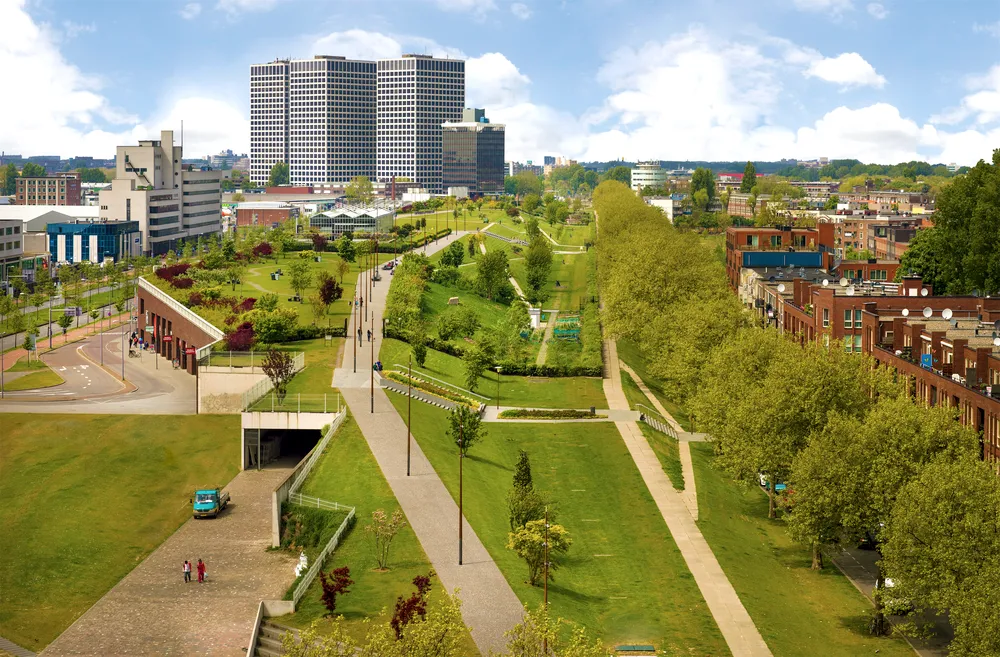
Materials and Techniques for Rooftop Garden Design: When designing a rooftop garden, a range of materials and techniques can be used to create a successful garden. Lightweight soil mixes are often used to reduce the weight of the garden, and drip irrigation systems can be used to conserve water.
Green roofs are often used in rooftop garden design. A green roof is a layer of vegetation that is planted on a waterproof membrane. This type of roof provides insulation, reduces the urban heat island effect, and can even reduce stormwater runoff.
If a green roof is not possible, containers can be used to grow plants on the roof. Containers are lightweight and can be easily moved if needed. They can also be used to create different levels and areas within the garden.
Conclusion: Rooftop gardens offer a range of benefits and can be a valuable addition to any property. When designing a rooftop garden, careful consideration needs to be given to the weight of the garden, wind exposure, and the types of plants that can be used. A range of
"The roof is not a just a normal roof anymore... it is a place to recreate and spend time whilst enjoying the view."

The roof was often forgotten in the past due to the fact that it isn’t visible and people didn’t know what exactly to do with it. The roof does not only provide shelter from the rain, protect us from heat and keep the house cool, nowadays it can also prevent flooding by buffering water. Making the rooftop useful and green increases the value of your property. You can plant trees and plants, develop a parc or even grow your own food.
"We are the specialist in design and supply materials to realize your dream Rooftop Garden."
As supplyer of rooftop materials we have the abblity to give advise and supply materials all of the world. Due to the fact that we realize large projects we have the possibility to ship materials in a price efficient way.
We have worked on several rooftop projects in which we were asked to take care of the green part of the project by for example choosing the plants for the rooftop garden. Our specialist knowledge has developed over the years by working together with experts from the biggest nurseries in the Netherlands. We would be privileged to give you the best advice in rooftop project development.
We have different types of rooftop systems:
1. Standard Extensive Green Roof


The facts:
- Roof with sufficient fall 1 in 80 (0.7°) to 15°
- System weight: approx. 95 kg/m² (fully saturated)
- System build-up height: approx. 90 mm
- Water buffer capacity: approx. 29 l/m²
2. Premium Extensive Green Roof


The facts:
- Roof with sufficient fall 1 in 80 (0.7°) to 15°
- System weight: approx. 75 kg/m² (fully saturated)
- System build-up height: approx. 90 mm
- Water buffer capacity: approx. 34 l/m²
3. Water Retention Extensive Green Roof


The facts:
- Roof with sufficient fall 1 in 80 (0.7°) to 15°
- System weight: approx. 236 kg/m² (fully saturated, based on 50 mm of water reservoir panel and 50 mm of growing medium)
- System build-up height: approx. 220 mm
- Water buffer capacity: approx. 159 l/m² (based on 50 mm of water reservoir panel and 50 mm of growing medium)
4. Standard Intensive Green Roof


The facts:
- Roof with sufficient fall 1 in 80 (0.7°) to 5°
- System weight: approx. 282 kg/m² (fully saturated)
- System build-up height: approx. 217 mm
- Water buffer capacity: approx. 115 l/m²
5. Water Retention Intensive Green Roof


The facts:
- Roof with sufficient fall 1 in 80 (0.7°) to 5°
- System weight: approx. 371 kg/m² (fully saturated, based on 50 mm of water reservoir panel and 50 mm of growing medium)
- System build-up height: minimal 300 mm
- Water buffer capacity: approx. 195 l/m² (based on 50 mm of water reservoir panel and 50 mm of growing medium)
6. Standard Parking Deck


The facts:
- Roof with sufficient fall: > 2% (depending on type of pavement)
- System weight: minimal 505 kg/m² (minimal thickness)
- System build-up height: approx. 294 mm (minimal height)
- Falls for paving created by roof construction and / or by grading of sub-base layer
7. Water Retention Parking Deck

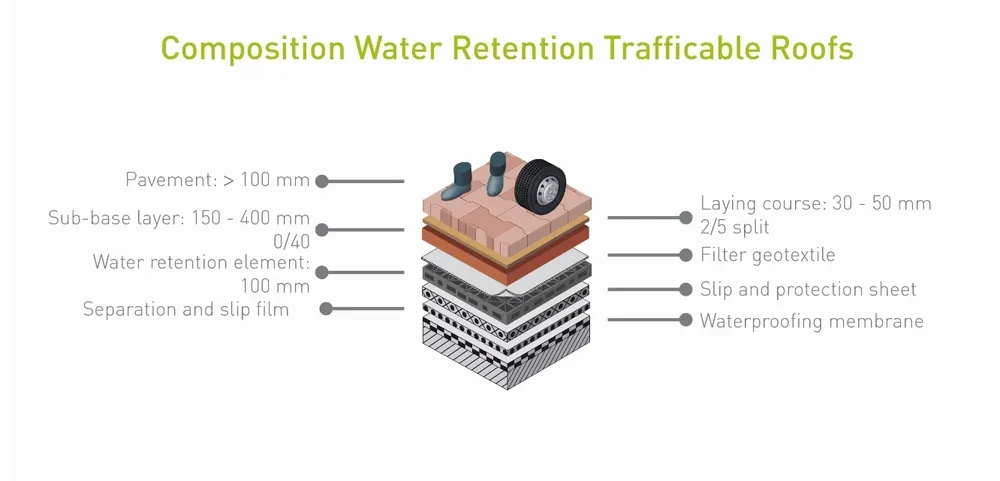
The facts:
- System weight: minimal 557 kg/m² (minimal thickness)
- System build-up height: minimal 380 mm (minimal height)
- Water buffer capacity: varies between 48 and 143 l/m² (depending on the height of the element chosen - 50 to 150 mm)
Background information
Roof gardens and green façades
As there is less and less space for trees and other plants in urban environments, roofs and façades are often the best way to bring back a natural balance. Firstly, roof gardens create space for greenery in urban areas. Roof gardens and green façades also make a significant contribution to capturing particulates, ecology and reducing the Urban Heat Island effect. Of course it's important to make a carefully considered choice for species that lend themselves to use on roofs when making a selection. And matters such as watering systems and substrates also need to be taken directly into account in the planting plan.
History of roof gardens:
It all started with sedum roofs to provide insulation. Roof gardens are now being implemented on a larger and larger scale and whole rooftop parks are even being created. Hectares of green space with creative planting and mature trees rising high above the building. But, do the positive effects of roof gardens weigh up against the supposed negative aspects?

The following main questions and statements about roof gardens can be answered as followed:
Trees don't grow well on roofs, the best you can do is keep them alive.
Of course trees grow on roofs. It's not much different to growing a tree in an urban environment. They're in containers on streets too - their growing space is limited. Of course on a roof you do need to take the choice of species into account. A tree of heaven or Robinia should not be placed on a roof, the strong roots would eventually damage the roofing material. What you see with tall standard trees is that it's difficult to prevent wind damage. The crown can be unbalanced by a broken branch. Multi-stem trees, on the other hand, retain their character even if a large branch is broken. The same goes for topiary trees - the annual pruning means these trees continue to renew themselves and are literally kept in shape.
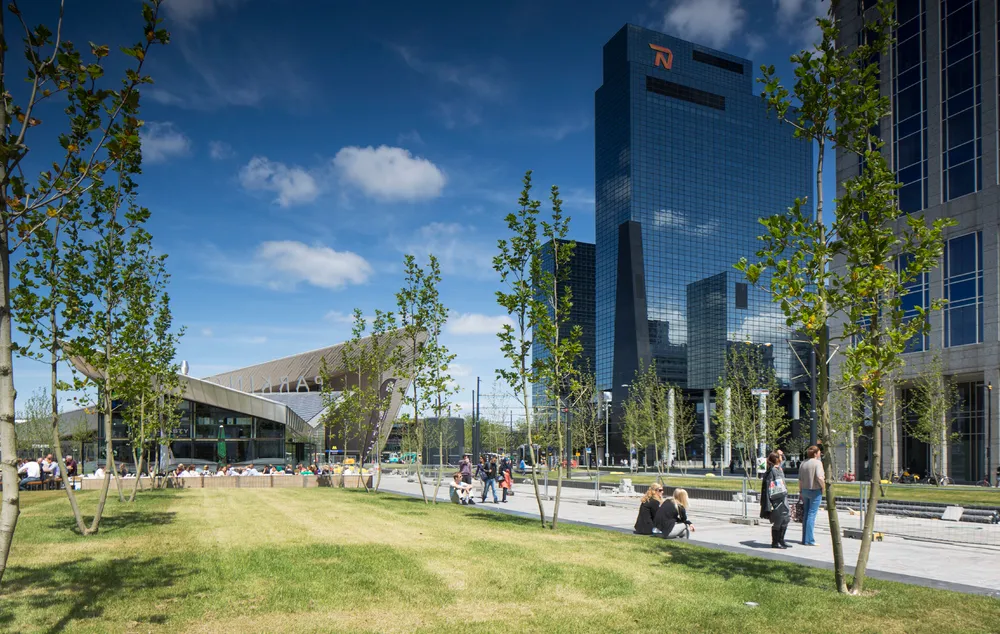
A tree in a roof garden is really a bonsai. The growing space is limited and the microclimate is different to that at ground level. The higher you go, the more the plants are affected by wind. There's still a lot you can do with trees on roofs, however. Whether or not the tree will grow depends entirely on the conditions in the growing location.

In this case we used light weight materials to shape the
On parking roofs, which can bear high loads, it's possible to add a much deeper growth layer. Trees will grow better here than on a high roof garden with lots of wind and a thinner layer. But it's important not to have the illusion that a tree can be completely grown in a roof garden. It's best to plant roof gardens with specimens in their final state and then maintain these carefully.
The management of roof gardens is a specialist field.
The management of a roof garden is certainly a separate skill, there's a lot of ignorance. We have seen trees that had to be anchored to the roof, so a mechanical ground drill was used to make holes for the tree posts. The trees were very firmly secured but, of course, the roof was also ruined. You don't just see problems with management but also with the use of roof gardens. People don't understand the construction beneath a roof garden. Some students thought it would be great fun to pitch their tents in their university's roof garden using tent pegs. So managers have a task ahead of them in educating other people.

It all starts with good design. With the right plants in the right place, many problems can be avoided. You have to create a situation that's as natural as possible, which means you need to ensure sufficient water, rooting space, oxygen and nutrition. After that, the management of a roof garden isn't that different from one on open ground. The trees in a roof garden need to be thinned so that the crowns don't become too heavy. This means some knowledge of successful pruning is necessary.
Roofs with planting will always leak in the long term.
This doesn't have to happen, but unfortunately sometimes it does. The cause is often a lack of expertise. The roofs load limit is tested and exceeded. And even if you did everything right technically, if plants with aggressive roots are added, it's just a matter of time before there's a leak. A growing space that is too narrow can also lead to problems. If a tree has too little space to grow, it will search for more space in order to survive. This can mean that the roots search for weak spots in the roofing.
Roof gardens certainly don't always leak, there are plenty of examples that show the opposite. It all comes down to the correct roofing construction. If the roof is going to leak, there is always an identifiable, often minor, cause. You often see a roof being used as a glorified building site when construction commences. It should first be completely emptied and every square metre should be evaluated by a specialist. It should then be tested for water-tightness. If it is well constructed and a knowledgeable manager is appointed, there won't be any unpleasant surprises.
Watering roof planting costs a fortune.
There should be a water buffer of five to seven centimetres in the substrate. This buffer is formed of rain water, which provides the plants not only with water but also with food. You have to create a situation that approximates nature as closely as possible. There is also a water buffer in the soil in a natural environment. If you design a roof garden in such a way that the rain water is drained off straight away, you will need to water the plants far too much to keep them alive.
For the drainage of water we use the best system:

There is an increasing need for water storage in cities all over the world so we need to add hectares of roof gardens. When calculating the maximum load of a roof garden, this reserve layer of water is taken into account. A good roof garden is calculated based on the maximum water saturation, including when frozen.

We do need to bear climate change in mind. You can see that new buildings are becoming less robust due to budget cuts whilst more rain, frost and snow is falling. If you have calculated a roof based on maximum saturation that has frozen and a lot of snow then falls, your calculation may be insufficient.
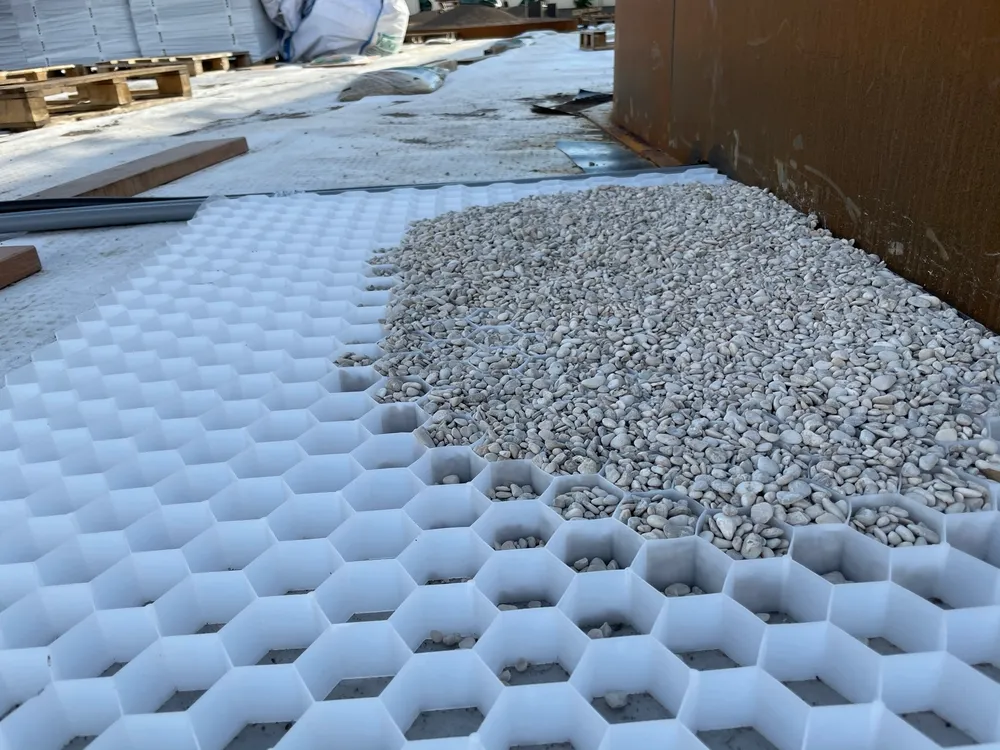
Roof planting can reduce the Urban Heat Island effect.
Concern and lack of knowledge cause people to hesitate about constructing a roof garden. But if you don't start, you won't get anywhere. Intensive roof gardens should really be compulsory in the development of new buildings. And by intensive, I mean a lot of greenery. I would like to see large rooftop parks on company buildings. These can be combined very successfully with a garden for employees or a children's nursery with a playground.
More and more paving is being introduced in cities, so there is less and less space for trees. So roof gardens could make an important contribution to reducing the Urban Heat Island effect. Companies really need to appreciate their added value so this angle isn’t going to convince them. That's why we need to make roof gardens multifunctional. The more functions, the more important it is to keep your roof garden well maintained. You also have to ensure that the roof garden is easy to maintain, to reduce the management. Of course this is true of everything, from a roof garden to a coffee machine.
Roof planting contributes to ecology.
Birds and insects love them. The water storage capacity of roof gardens is also important. The rain water is filtered and the evaporation of the water cools the area. A city with a lot of roof gardens really feels cooler. You also see that the younger generation is more aware of the environment and that ecology increasingly plays a role in multifunctional roof gardens. More and more people want to grow their own vegetables and fruit. A properly constructed roof garden is particularly suitable for this and therefore serves various purposes. Vegetable gardens are somewhat romanticised in the media but, in principal, it's a good idea to grow your own vegetables in a roof garden.
Roof planting makes an important contribution to ecology and improving the microclimate, but we need to stop extolling the virtues of vegetable gardens on roofs. There's currently a lot of hype surrounding purity and getting back to nature. If you look back at history over a long period, you can see that this always happens when the economy is poor. The environment then becomes important and farmers become our heroes. As soon as the economy picks up again, it's all forgotten and we're left with a rotting container of kale on the roof.

We don't think this is going to happen and I believe that vegetable gardens on roofs will have a longer life. Of course it needs to be combined with an enduring tree and plant structure, otherwise your garden will be completely bare during the winter. But we are becoming more and more aware of the environment. People who can spare the time will be increasingly likely to choose a vegetable garden on the roof. From my viewpoint, this is not linked to the economy and is a lot more to do with urbanisation and the desire to create a piece of green in the city that will literally bear fruit.
A roof garden should be functional and the basis should be good. You have to give it a heart. Otherwise it will slowly die. A vegetable garden requires intensive maintenance and it's not honestly much to look at. If you want a vegetable garden you have to make sure it's part of a very good combination. And when you lose interest, the birds should be able to eat everything so there's no mess and nothing has gone to waste.
Roof planting: a blessing or a curse?
Of course they are a blessing. It's embedded in our genes to create a little green in the strangest possible places, just look at the Hanging Gardens of Babylon. We need vegetation, our grey environment needs more greenery and our greying population needs more green too!
People need a green environment to live in and to stay healthy. Roof gardens contribute to more green and allow us to experience the seasons. They improve the microclimate and bring human scale back to urban environments. The value of buildings increases when more greenery is added to them or near them, that's a fact. But alongside all these arguments, we mustn't forget that people often really enjoy roof gardens, even if they don't know why. And this user experience is extremely important.
If you need more information about Roof Gardens, send us an email: info@greenconceptors.com

View

View
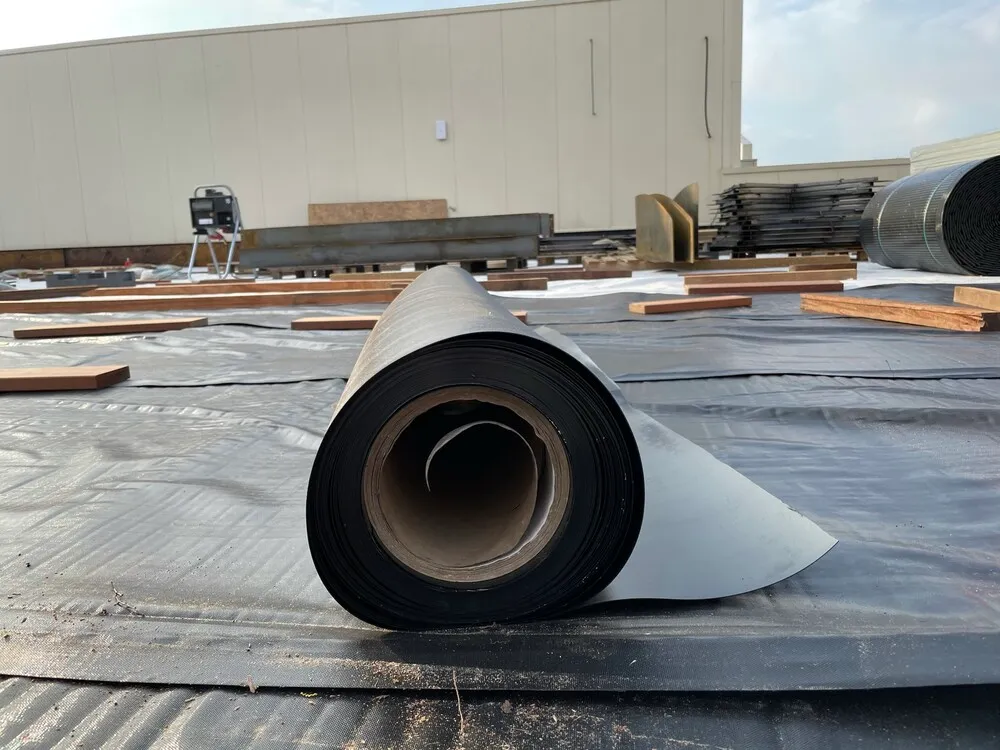
View

View

View

View

View

View

View

View

View

View

View

View

View

View

View

View

View
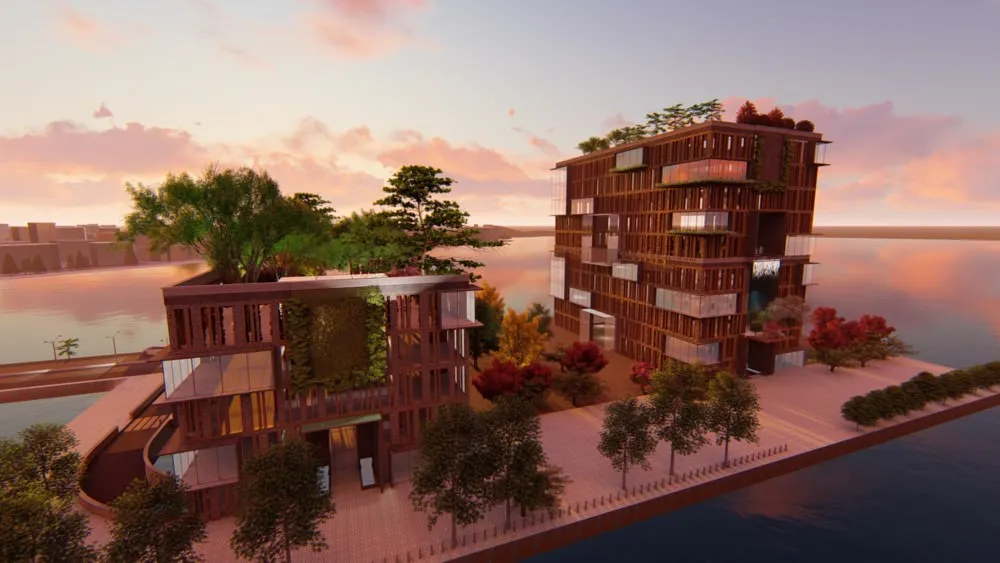
View

View

View

View

View

View
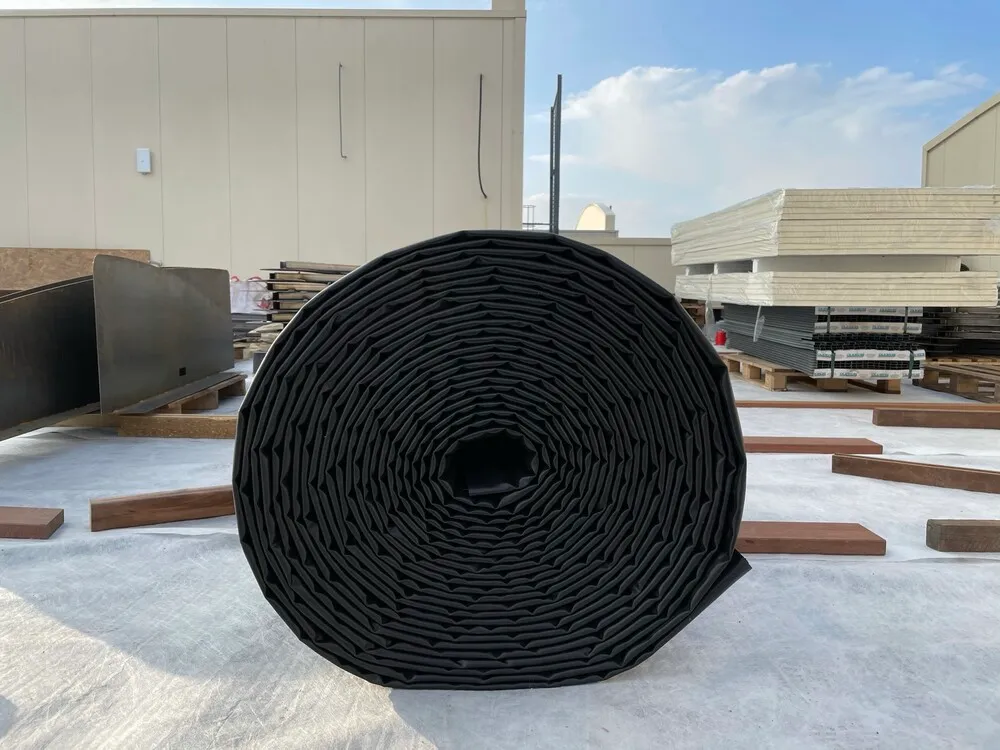
View

View
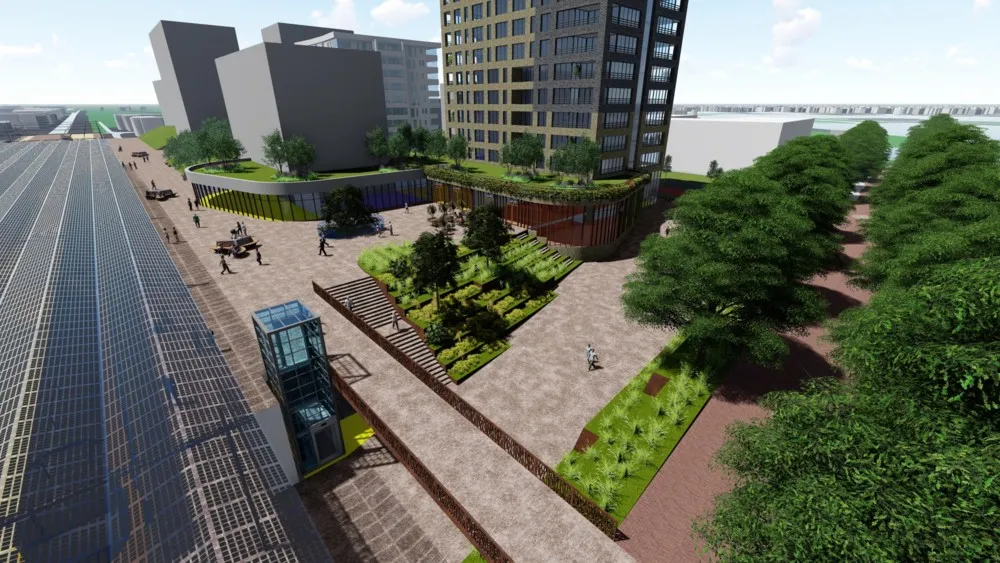
View

View
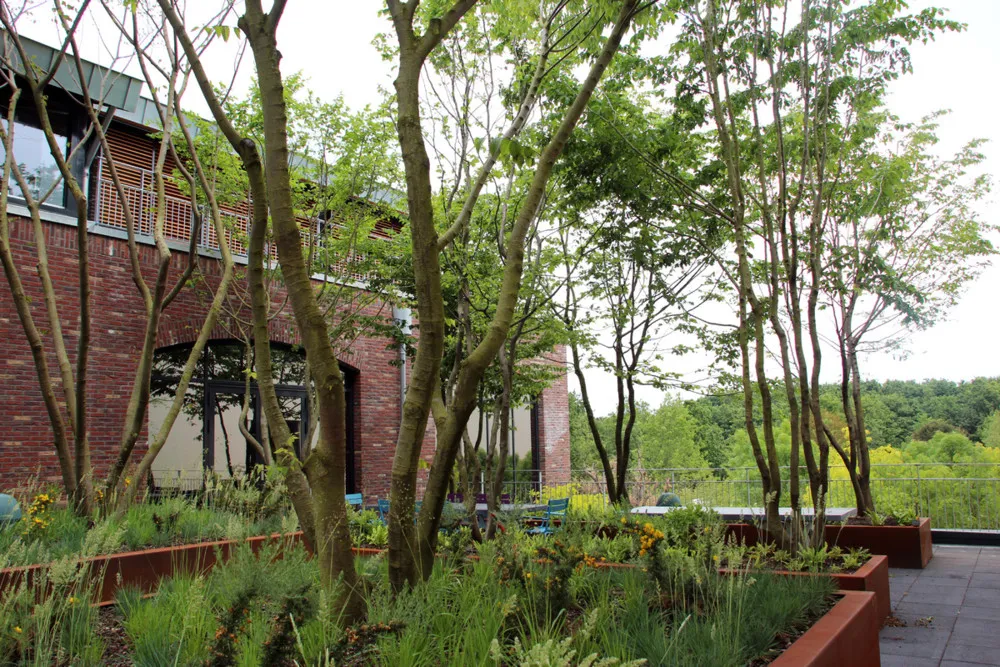
View

View

View

View

View

View

View

View

View

View

View

View

View

View

View

View

View

View
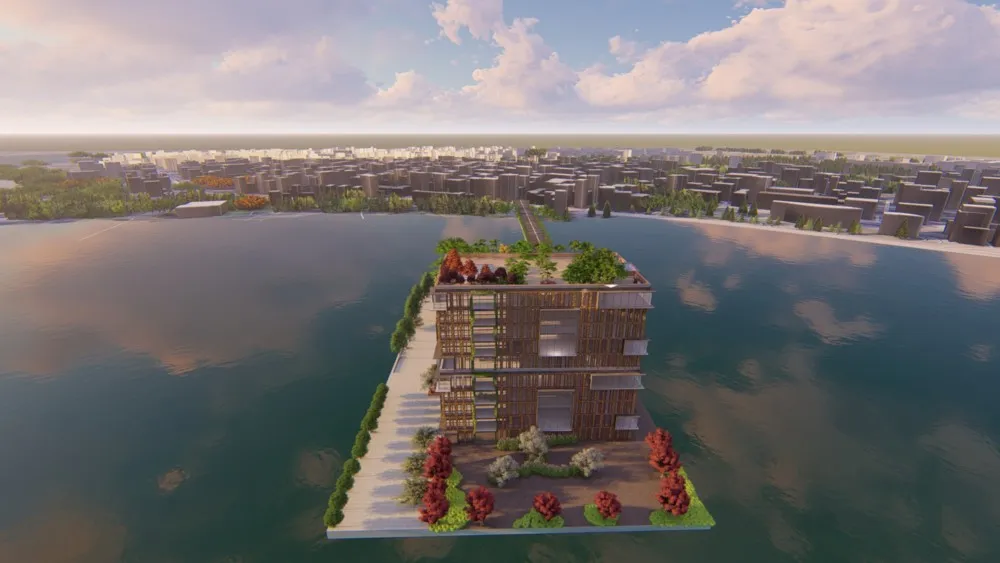
View
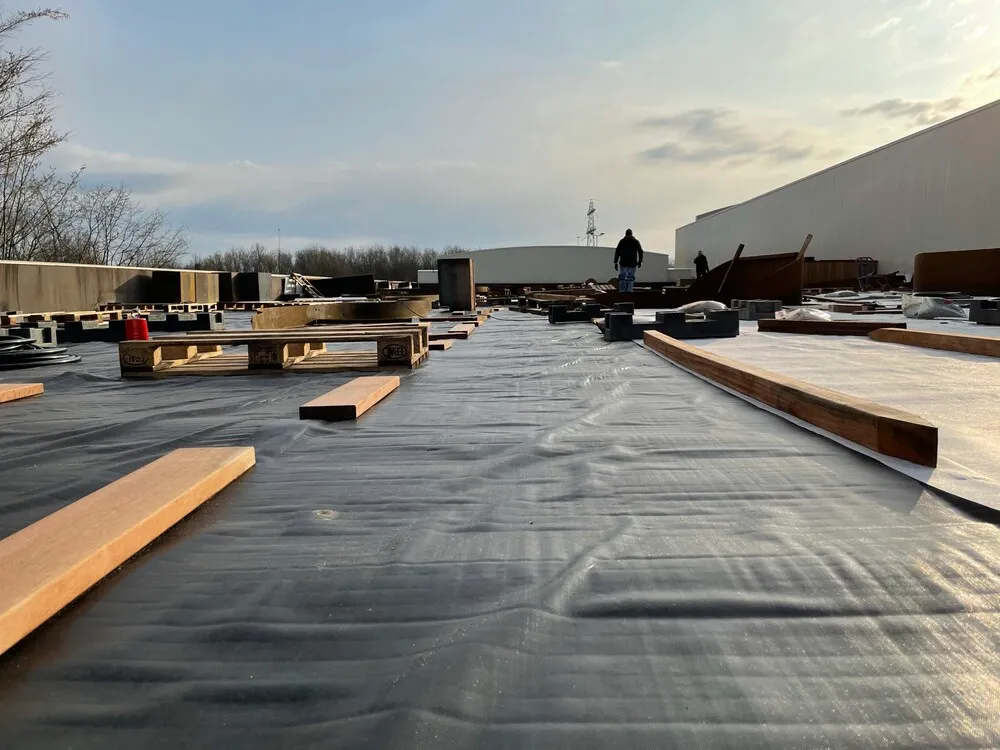
View

View
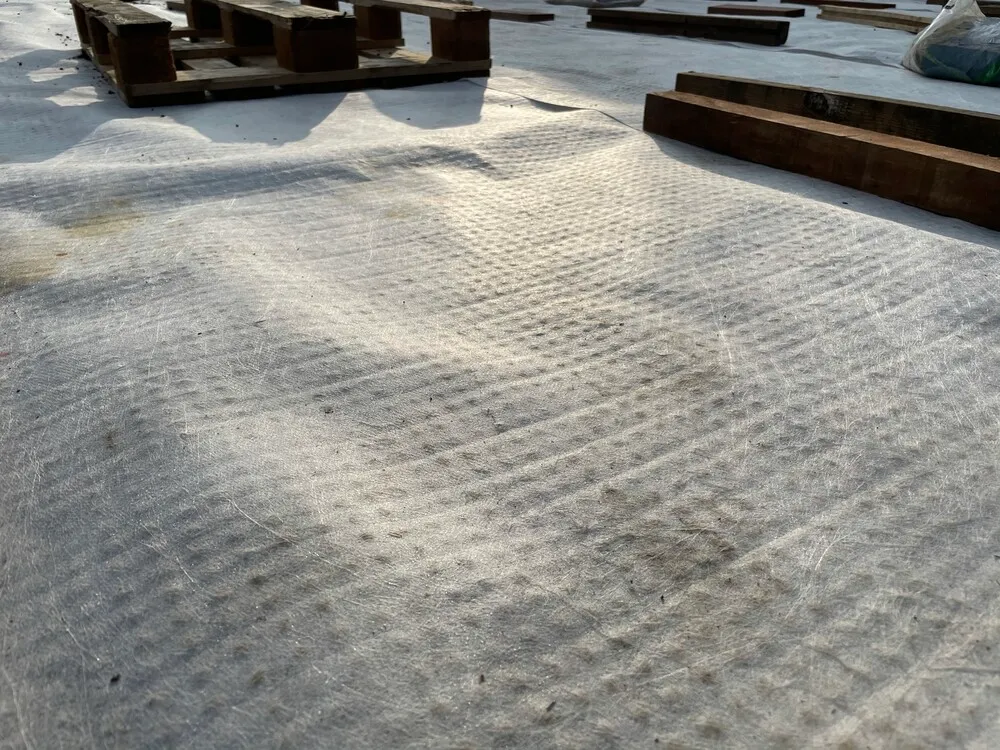
View

View

View

View

View

View

View

View
